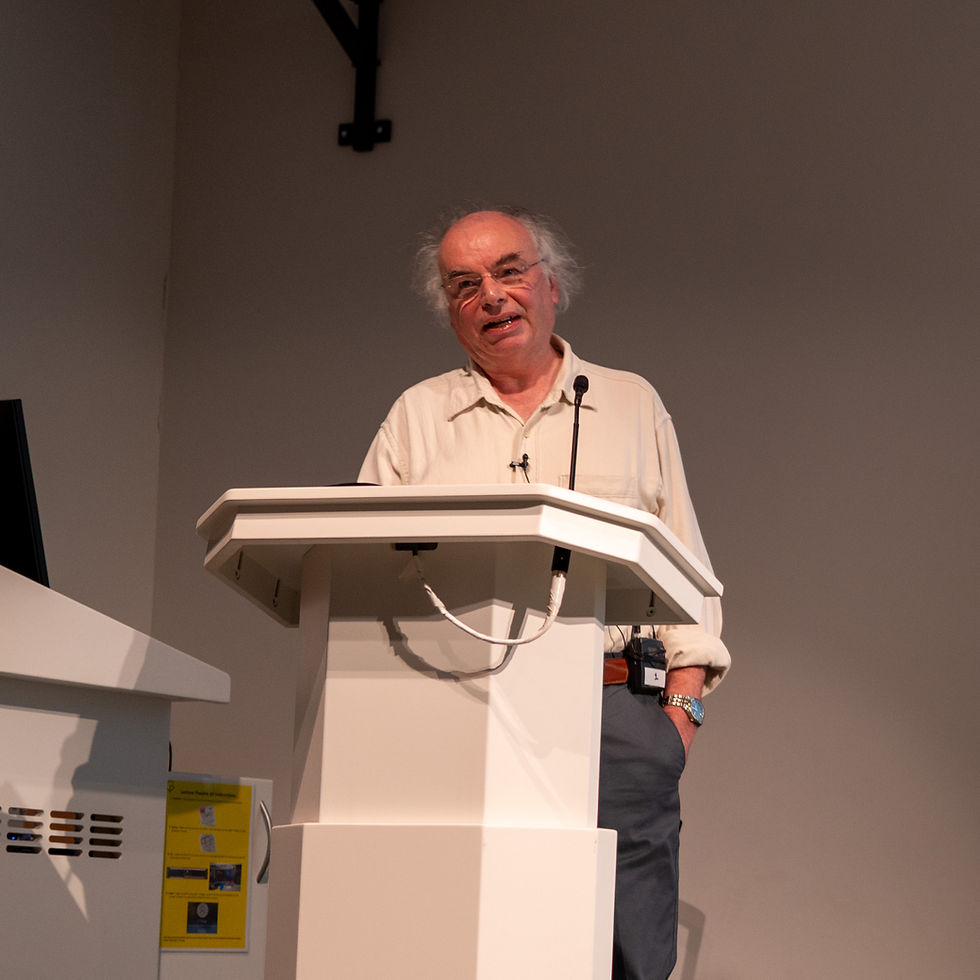Back from the Brink: Listening for Impacts on Mars, by Professor Gareth Collins
- Paul May

- Nov 13, 2023
- 3 min read
For our 3rd main lecture of the season we made a welcome return from the furthest reaches of the universe to our own celestial backyard.
Lucy and Steve - what's in a name
Before tackling Martian mysteries, Adrian Challinor introduced us to Lucy and Steve in our latest sky news section. Lucy is an asteroid probe launched 2 years ago which has just made its first asteroid flyby of a main belt asteroid called Dinkinesh (just under a km in size). In the process she discovered a dinky companion - a 'contact binary' moon. Lucy is scheduled to make further asteroid flybys in the Trojan asteroid belt that share an orbit with Jupiter. Why Lucy? It was named after the early hominid skeleton found in Ethiopia 50 years ago, alternatively named Dinkinesh or 'marvellous' in the local dialect! The hope is that the Lucy probe will teach us as much about planetary evolution as did the skeleton about human evolution.

And STEVE? Less romantically this is a Strong Thermal Emission Velocity
Enhancement which accompanies the aurora borealis but results from thermal excitation of gases rather than charged particles. All the same, it is a beautiful purple and green ribbon in the sky which is rarely seen and only recently acknowledged as a distinct phenomenon.
Listening for impacts on Mars - a scientific detective story
Professor Gareth Collins began his talk by describing the measurement tools of his trade. In essence, crater density is a proxy for surface age. This crater chronometer has been carefully studied on the moon where samples have been recovered from different sites with different crater densities and ages. The problem is that the theoretical density of craters on Mars using this clock does not agree with direct observation. How are we to resolve this discrepancy? With InSight! That is a Mars lander for Interior Exploration using Seismic Investigations, Geodesy and Heat Transport.

The case of the missing meteors
This Mars lander arrived in November 2018 and functioned until December 2022 when Martian dust had completely covered it's solar panels - but still twice the expected life of 2 years. The key instrument was a seismometer for measuring both internal structure following marsquakes and also for measuring asteroid impacts. There were plenty of quakes for the first team to get into, but Gareth's team had to wait patiently for an asteroid hit - 1-10 measurable events were expected each year. They waited, and they waited... until 3 years later they had almost given up hope.
A meteoric Xmas gift
Then on 24th December a sufficiently large meteor struck close enough to create a characteristic chirped impact signature on the seismometer. This turned out to be a Rosetta stone that allowed other previously unidentified impacts to be classified and most importantly located. In all, 6 events were definitively mapped and the location confirmed by satellite imagers. Enough data had now been collected to confirm that the lunar crater clock had accurately predicted the correct crater density and that direct observation had clearly not been sufficiently accurate.

Buses come in pairs and the ice on the cake
Subsequently 2 magnitude 4 events were recorded due to double-decker bus sized meteor impacts within 100 days of each other. These were far enough away from the lander that high quality information about the planets core could be derived from the different vibrational waves. From the now intepretable seismology signature they were able to take high resolution images of the impact site. These images clearly identified white 'blobs' of ice which ere calculated to come from a shallow depth of less than 6m - an extraordinary discovery!
Thank you Gareth for relating a very enjoyable and human tale of mystery, endeavour, perseverance and ingenuity with some large dollops of good fortune. A great insight into the scientific process.























Comments